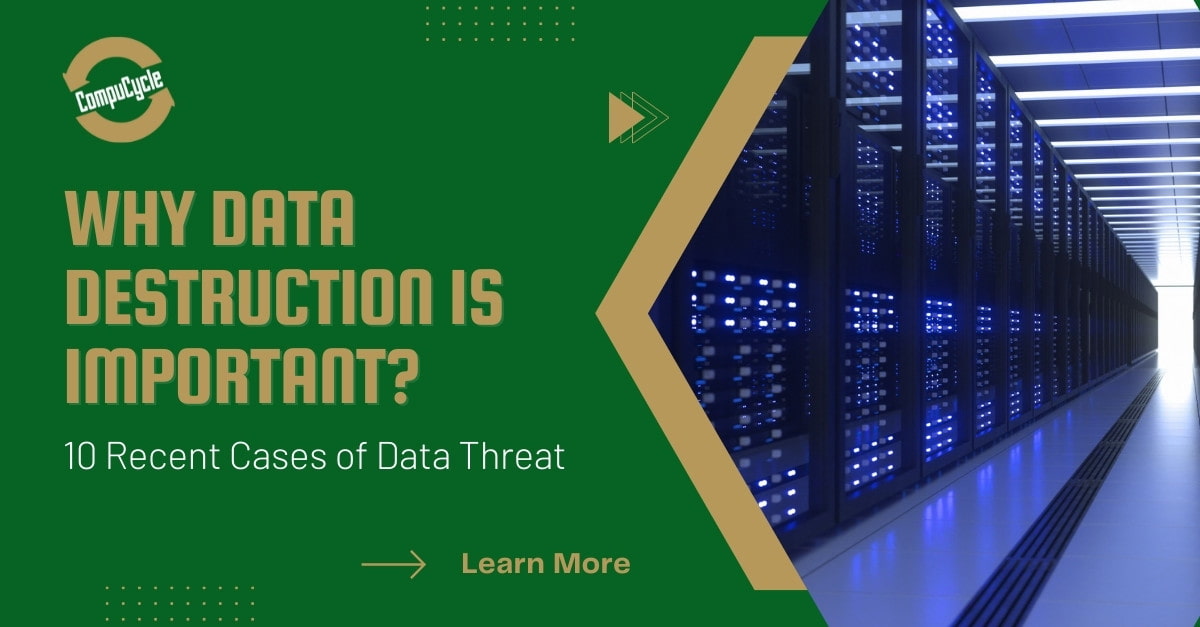Checking Out the Relevance of Data Devastation in the Context of Computer System Protection Providers and Protecting Confidential Data
In a period where information breaches are progressively typical, the relevance of effective information devastation can not be overemphasized. What methods can organizations implement to enhance their data destruction methods?
Recognizing Data Destruction
Data devastation is a crucial component of computer system protection that includes the irreversible removal of data from storage tools to avoid unauthorized gain access to and prospective information violations. In an increasingly digital landscape, companies encounter heightened threats associated with sensitive info being incorrectly accessed or manipulated. Effective information destruction safeguards against these dangers, guaranteeing that personal dataâEUR" such as client details, copyright, and economic recordsâEUR" can not be recovered after disposal.
Comprehending the significance of information damage prolongs beyond plain conformity with regulative and lawful frameworks; it is vital for preserving organizational stability and trust fund. When information is poorly managed or improperly ruined, the consequences can be serious, consisting of monetary loss, reputational damage, and lawful obligations.

Methods of Data Obliteration

One prevalent technique is data cleaning, which includes overwriting existing data with random patterns several times. This strategy provides the original data irretrievable, making it a popular choice for companies seeking to safeguard secret information.
Another method is degaussing, which utilizes a powerful magnetic area to interrupt the magnetic domain names on storage space devices, properly getting rid of the data. This approach is particularly reliable for magnetic media but is not suitable to solid-state drives.
Physical destruction is one more robust method, squashing or including the shredding of storage space devices. This technique assurances that information healing is virtually difficult, making it optimal for very delicate info.
Finally, encryption can serve as a complementary strategy to information elimination. By securing information before removal, companies can include an additional layer of security, ensuring that also if remnants are recouped, they stay unattainable without the decryption secret. Each approach should be selected based upon the degree of information sensitivity and the particular protection needs of the organization.
Legal Compliance and Information Security
Organizations have to navigate an intricate landscape of lawful requirements connected to data safety, especially after implementing methods of data elimination. Numerous guidelines, such as the General Data Security Policy (GDPR) and the Wellness Insurance Coverage Transportability and Accountability Act (HIPAA), impose rigorous guidelines on how companies have to deal with and dispose of sensitive information. Failing to abide by these regulations can bring about significant legal consequences, consisting of significant penalties and reputational damages.
Data devastation processes should be meticulously documented to show conformity with suitable legislations and requirements. This paperwork not only acts as proof of adherence to legal commitments this article but also shows a dedication to guarding delicate information. Organizations should likewise establish clear policies relating to data retention and destruction timelines, making certain that data is not held longer than essential.

Furthermore, regular audits and assessments of information destruction practices are vital to maintain conformity and adjust to progressing legal frameworks (data destruction). By proactively attending to legal requirements, organizations can alleviate risks related to data violations and show their dedication to information protection. Ultimately, focusing on legal compliance in data destruction processes is not simply a regulatory responsibility, however a basic aspect of a durable information safety and security approach
Effect On Business Track Record
The online reputation of an organization can be substantially impacted by its technique to information damage and management. In today's electronic landscape, where data violations can occur anytime, the failing to effectively dispose of sensitive info can result in severe effects. Organizations that inadequately handle data devastation threat exposing confidential consumer information, which not just violates personal privacy regulations yet likewise deteriorates depend on amongst stakeholders and clients.
A ruined online reputation can lead to decreased customer loyalty, as customers end up being reluctant to engage with an organization that has actually shown oversight in shielding their data. Adverse publicity bordering a data discover this breach can have a lasting impact, as prospective clients might be discouraged by the perceived absence of security. This can lead to a direct decline in income and market share.
Furthermore, businesses that focus on information destruction as part of their protection approach can enhance their track record by showcasing their dedication to guarding delicate info. By adopting rigid information management methods, companies can not only reduce dangers yet additionally position themselves as reliable entities in their corresponding industries, therefore reinforcing their total brand name photo.

Best Practices for Secure Disposal
Applying ideal practices for safe and secure disposal of data is vital for minimizing dangers linked with information breaches and guaranteeing compliance with privacy policies. Organizations should adopt a thorough information disposal policy that describes procedures for both physical and digital data devastation.
For physical data storage gadgets, such as hard disks, shredding or degaussing is advised to stop data recovery. Additionally, companies need to keep a chain of guardianship documentation throughout the disposal procedure, ensuring accountability and traceability of disposed things.
For digital information, making use of software program that adheres to market criteria for you can look here information cleaning is vital. This software program needs to overwrite existing data multiple times, making healing basically impossible. It is also essential to verify the performance of the data damage procedure with audits or third-party evaluations.
Training staff members on safe disposal techniques adds another layer of security, as human error can frequently cause information exposure. Routinely updating and reviewing disposal plans makes certain alignment with developing laws and technical advancements. By applying these ideal practices, companies can dramatically reduce the risk of unauthorized data accessibility and boost their overall data defense strategy.
Final Thought
Finally, information destruction is a fundamental element of computer security solutions that makes certain the defense of secret information from unauthorized gain access to. Applying effective methods of information elimination, sticking to lawful compliance, and identifying the influence on business reputation are important components of a thorough information safety strategy. By taking on best practices for protected disposal, companies can promote depend on with customers and guard delicate information, ultimately contributing to an extra safe digital landscape.
In an era where data violations are significantly common, the relevance of effective data damage can not be overstated.Information destruction is a crucial component of computer system safety that involves the irreversible elimination of information from storage devices to avoid unauthorized access and possible data breaches. Organizations needs to additionally develop clear plans relating to information retention and devastation timelines, guaranteeing that information is not held longer than necessary.
By proactively resolving legal requirements, companies can alleviate risks linked with data breaches and show their commitment to data safety and security (data destruction). Ultimately, focusing on lawful conformity in information damage processes is not simply a regulatory obligation, however a basic element of a robust data safety and security method
 Bradley Pierce Then & Now!
Bradley Pierce Then & Now! Mason Gamble Then & Now!
Mason Gamble Then & Now! Michael Oliver Then & Now!
Michael Oliver Then & Now! Tiffany Trump Then & Now!
Tiffany Trump Then & Now! Daryl Hannah Then & Now!
Daryl Hannah Then & Now!